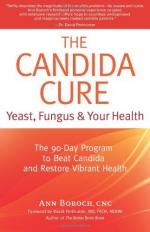|
This section contains 798 words (approx. 3 pages at 300 words per page) |

|
Yeasts are microscopic one-celled organisms that are classified in the kingdom Fungi. They lack chlorophyll and hence cannot make their own food as plants do. However, they have cell walls of cellulose and thus were formerly classified as plants. The individual cells multiply rapidly by the process of budding, in which a new cell begins as a small bulge along the cell wall of a parent cell. Soon huge populations of yeast cells aggregate, especially in the presence of an abundant food source. The cells often appear as long chains, with newly formed cells still attached to their parent cells, owing to the short budding time of just two hours. Yeasts are among the few living things that are able to get their energy in the absence of oxygen. During such anaerobic conditions, compounds produced by the yeast break down carbohydrates--starches and sugars--to form alcohol and carbon dioxide...
|
This section contains 798 words (approx. 3 pages at 300 words per page) |

|


